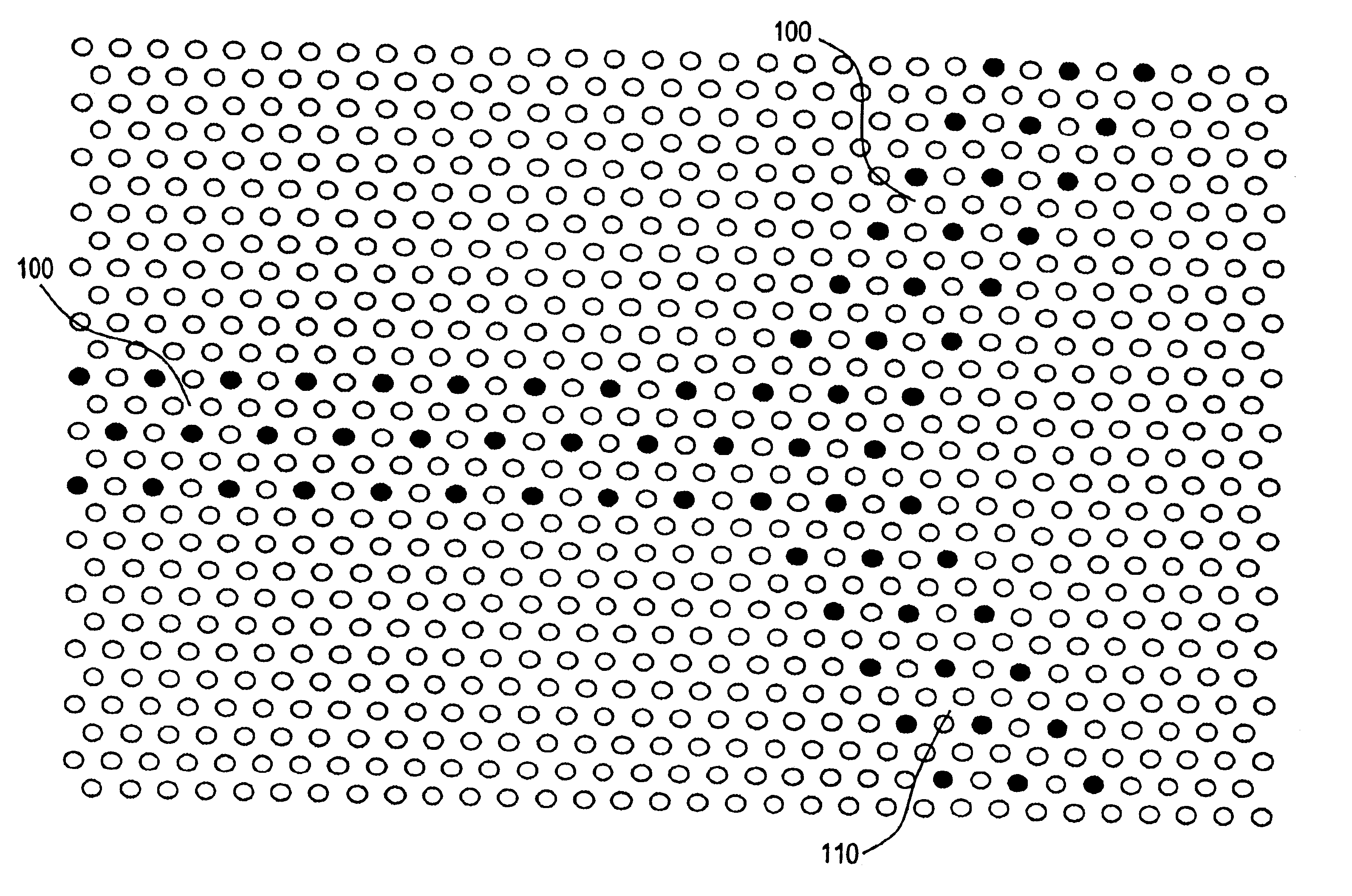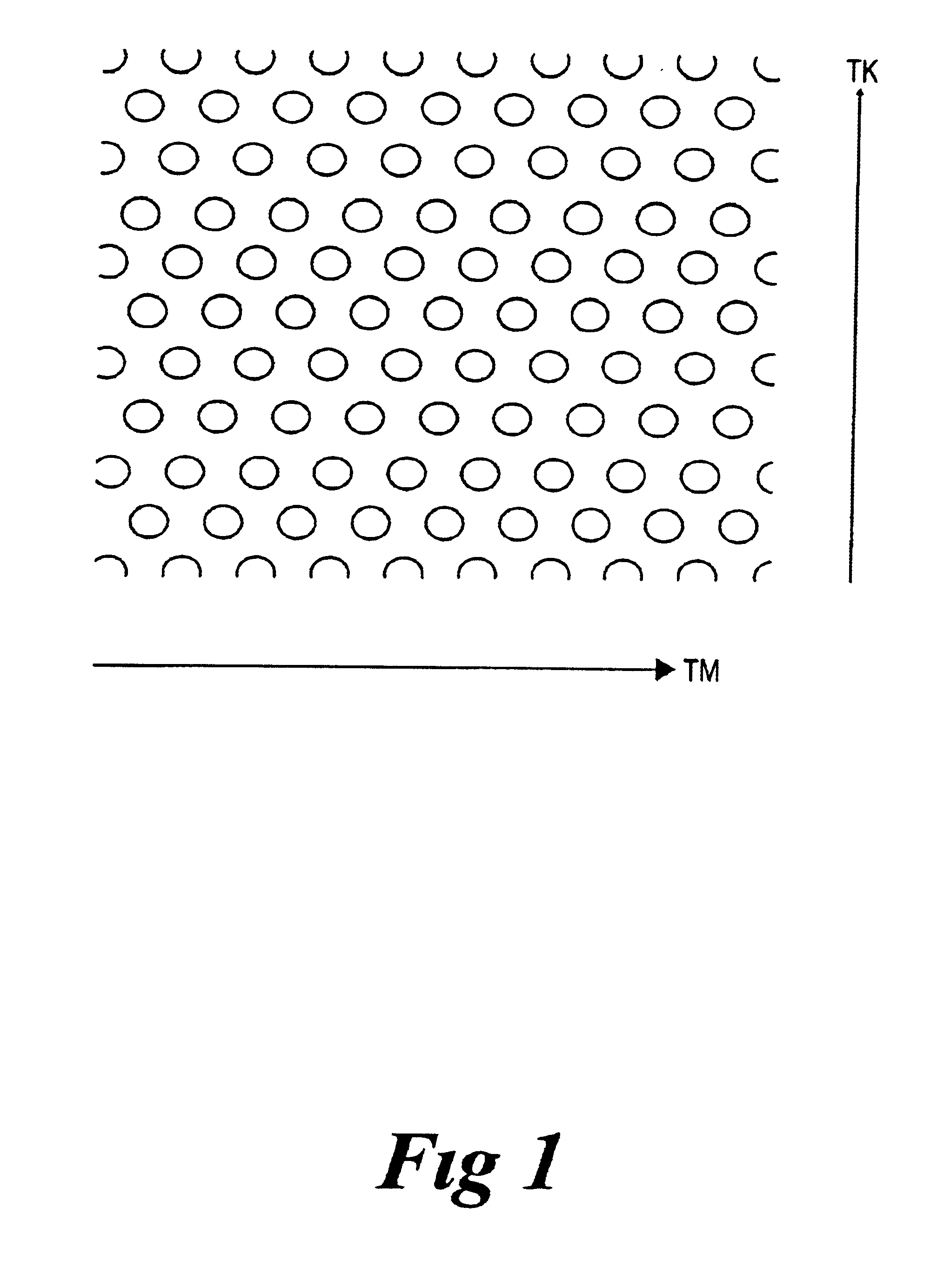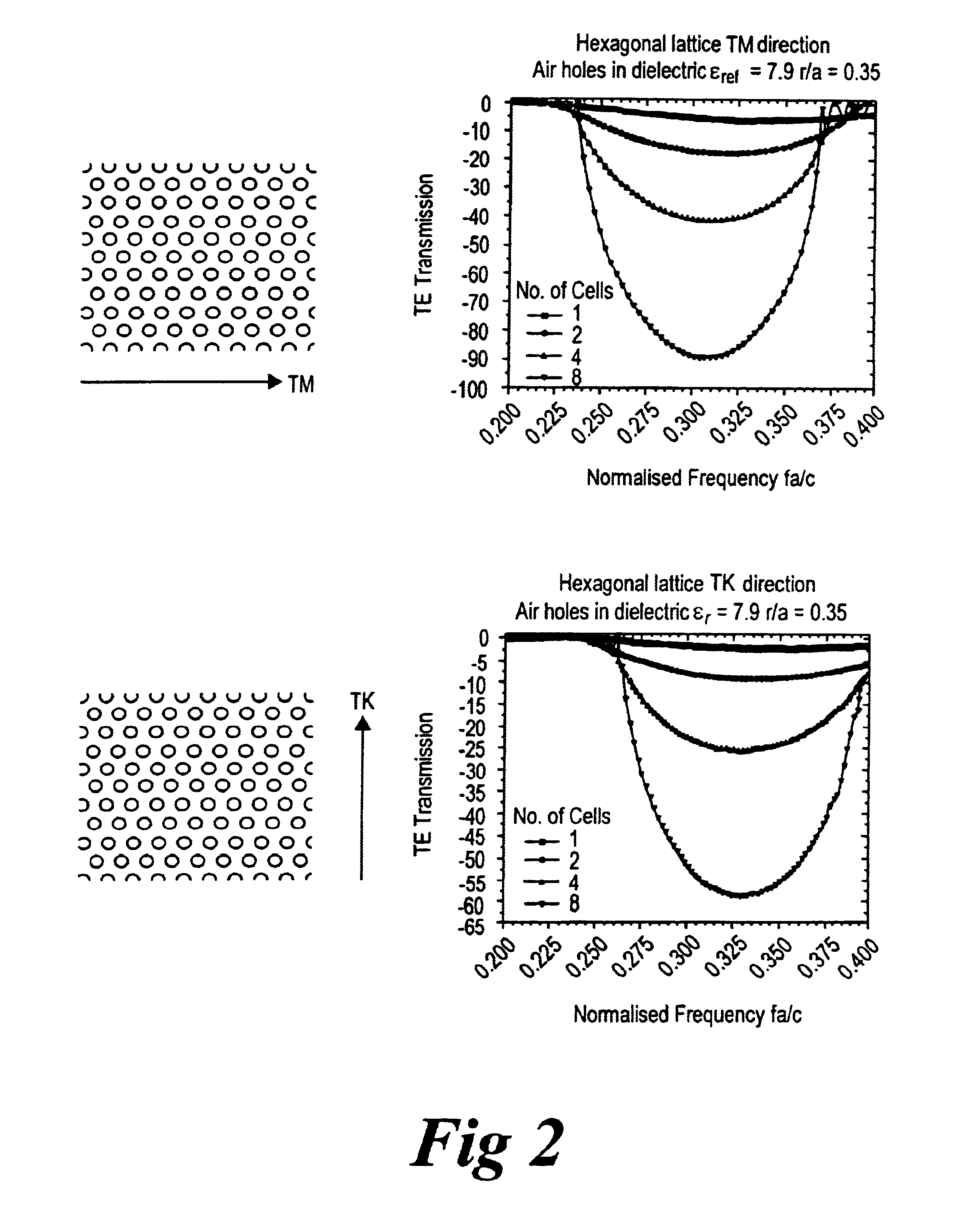Photonic bandgap device using coupled defects
a bandgap device and coupled defect technology, applied in the direction of optical waveguide light guide, instruments, nanotechnology, etc., can solve the problems of discontinuous defect photonic bandgap, coupling and fragility problems, and serious device integration,
- Summary
- Abstract
- Description
- Claims
- Application Information
AI Technical Summary
Benefits of technology
Problems solved by technology
Method used
Image
Examples
Embodiment Construction
By way of introduction to the examples of how to implement the above mentioned features, first, transmission response of a photonic crystal having a hexagonal lattice structure, with and without a mesh of defects, will be described. Then, various different meshes will be explained, before describing waveguide configurations and applications, using the meshes or lines of defects.
FIGS, 1 and 2, Perfect Crystal Before Defects are Introduced
A section of a hexagonal lattice before defects are introduced is shown in FIG. 1 and the two main crystal directions are labelled within the figure, .GAMMA.M and .GAMMA.K. The refractive index of the material was chosen to be nmaterial=2.81 resulting in a dielectric constant of er=7.9. These figures are representative of the effective index of a GaAs waveguide that is 1 / 2 mm thick, with oxidised AlGaAs on one side, nAIOx=1.6, and air on the other for application at 1.5 mm. The air cylinders in the material were chosen to have a ratio of radius, r, t...
PUM
 Login to View More
Login to View More Abstract
Description
Claims
Application Information
 Login to View More
Login to View More - R&D
- Intellectual Property
- Life Sciences
- Materials
- Tech Scout
- Unparalleled Data Quality
- Higher Quality Content
- 60% Fewer Hallucinations
Browse by: Latest US Patents, China's latest patents, Technical Efficacy Thesaurus, Application Domain, Technology Topic, Popular Technical Reports.
© 2025 PatSnap. All rights reserved.Legal|Privacy policy|Modern Slavery Act Transparency Statement|Sitemap|About US| Contact US: help@patsnap.com



